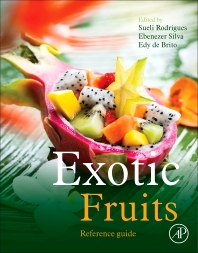Books in Fruits vegetables and nuts
Books in Fruits vegetables and nuts

Pulse Foods
Processing, Quality and Nutraceutical Applications- 2nd Edition
- Brijesh K. Tiwari + 2 more
- English

The Genus Citrus
- 1st Edition
- Manuel Talon + 2 more
- English

Postharvest Technology of Perishable Horticultural Commodities
- 1st Edition
- Elhadi M. Yahia
- English

The Role of Functional Food Security in Global Health
- 1st Edition
- Ronald Ross Watson + 2 more
- English

Postharvest Physiology and Biochemistry of Fruits and Vegetables
- 1st Edition
- Elhadi M. Yahia + 1 more
- English

Exotic Fruits Reference Guide
- 1st Edition
- Sueli Rodrigues + 2 more
- English

Handbook of Grape Processing By-Products
Sustainable Solutions- 1st Edition
- Charis M. Galanakis
- English

The Coconut
Phylogeny,Origins, and Spread- 1st Edition
- N Madhavan Nayar
- English

Citrus Fruit Processing
- 1st Edition
- Zeki Berk
- English

Peanuts: Processing Technology and Product Development
- 1st Edition
- Qiang Wang
- English